Abstract
Picture-cards, photographs, and real objects were compared as training stimuli in order to determine which best facilitated the generalization of naming responses learned in a special training room to real objects in the natural environments of four retarded children. The amount of transfer of naming behavior between the three stimulus modes and the average amount of training time required per stimulus mode were also assessed. Three of the four children displayed considerably more generalization to the real objects in the natural environment when they were trained with real objects. The fourth child displayed substantial generalization regardless of the training stimulus mode. No particular training stimulus mode clearly facilitated the transfer of naming responses to other modes or greatly reduced training time. The results of two supplementary procedures conducted with one child showed that: (1) training in several environments facilitated generalization to real objects in the natural environment when real objects were used as training stimuli but not when picture-cards were used, and (2) transfer from picture-cards to real objects was facilitated by training other picture-cards and the real objects portrayed by them at the same time.
Full text
PDF
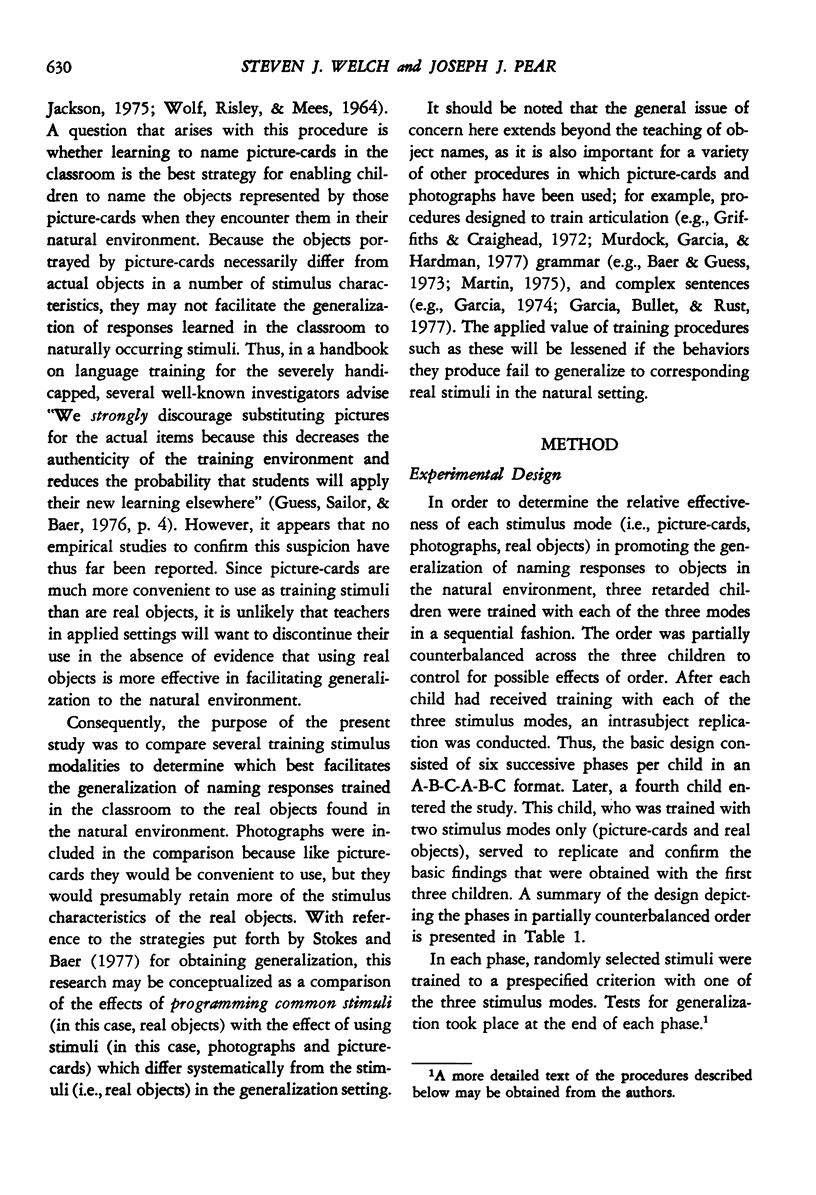
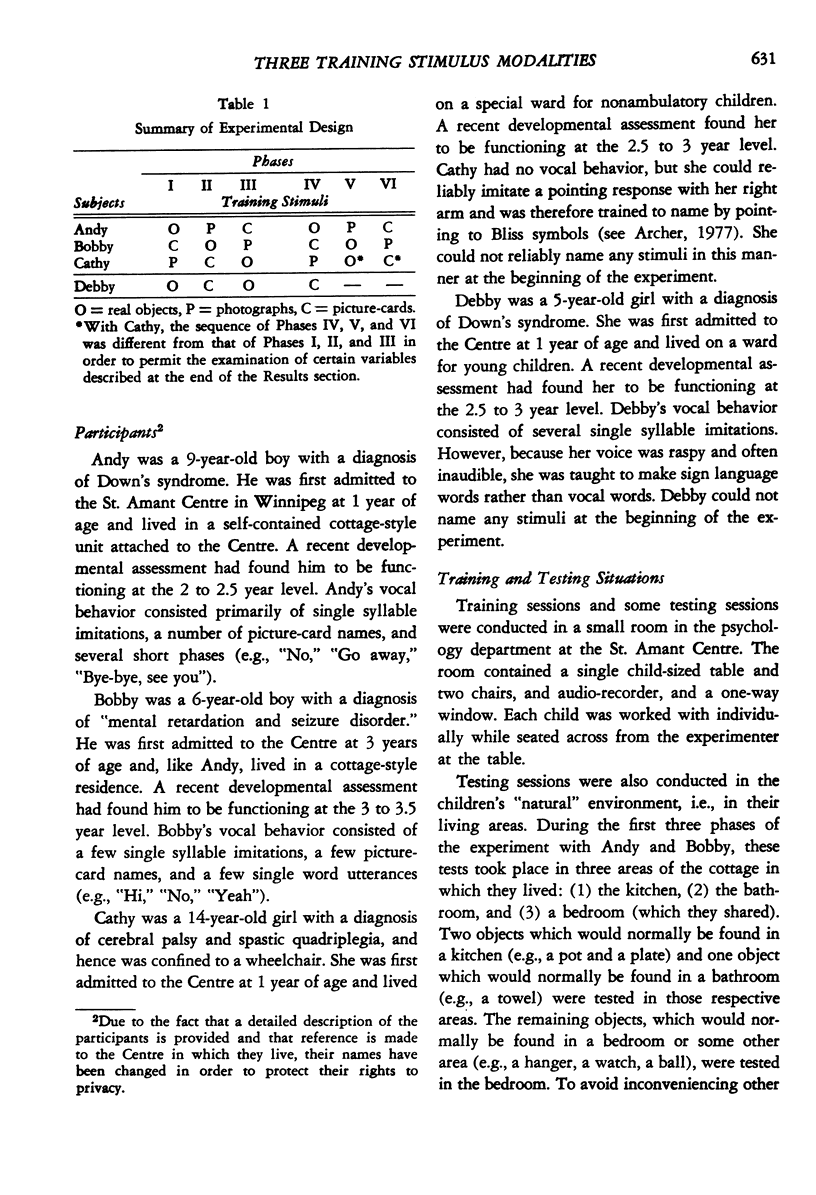

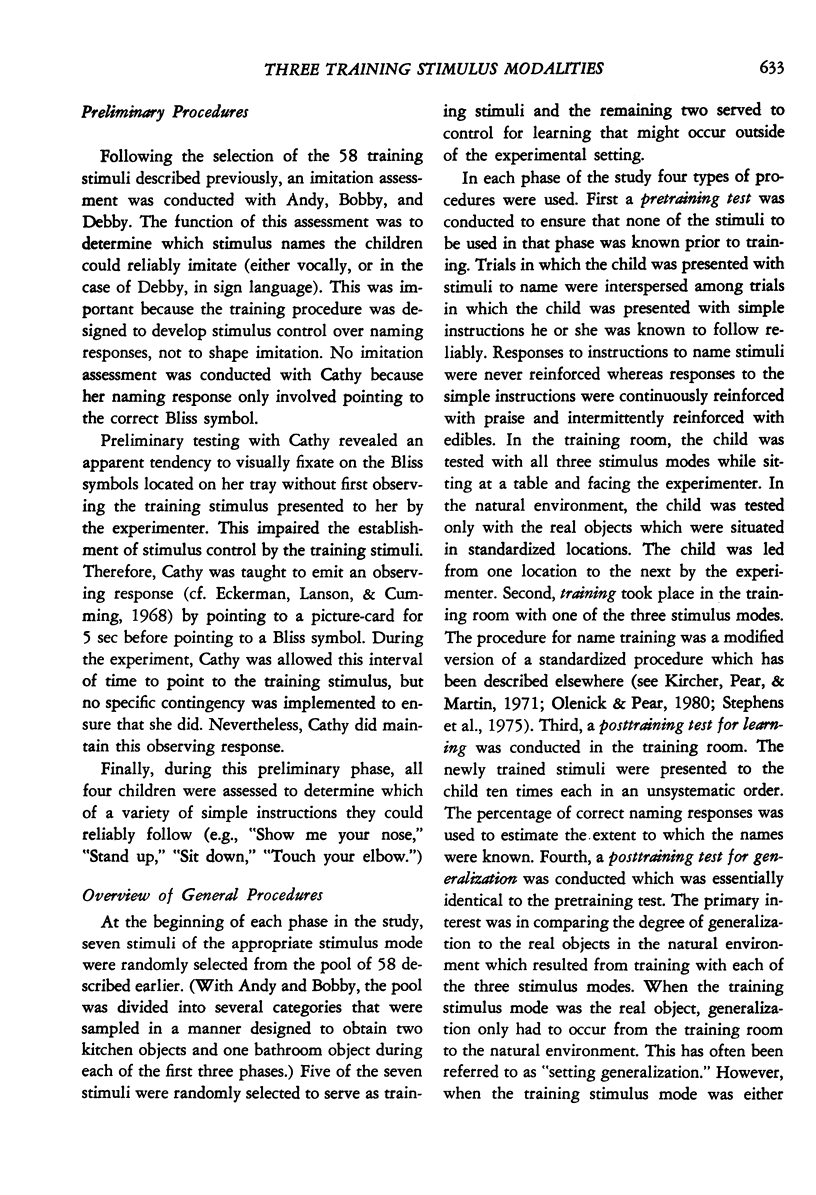

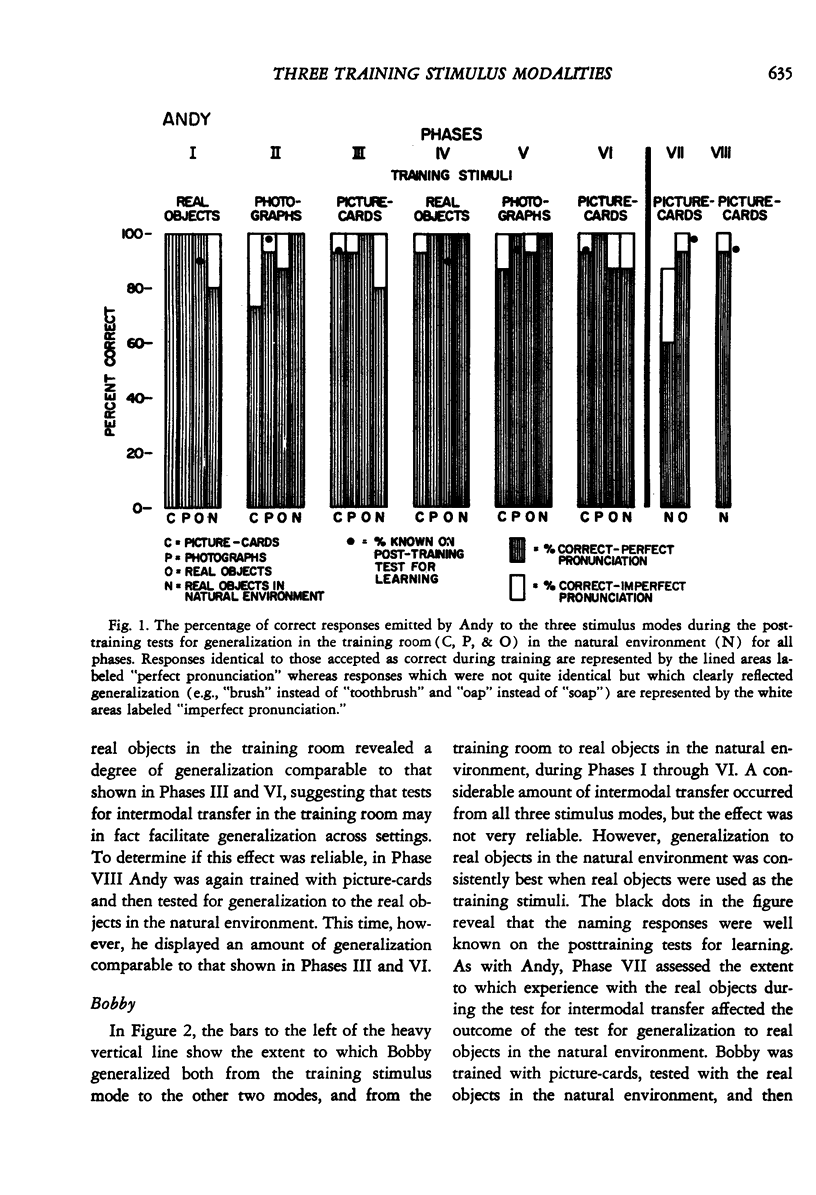
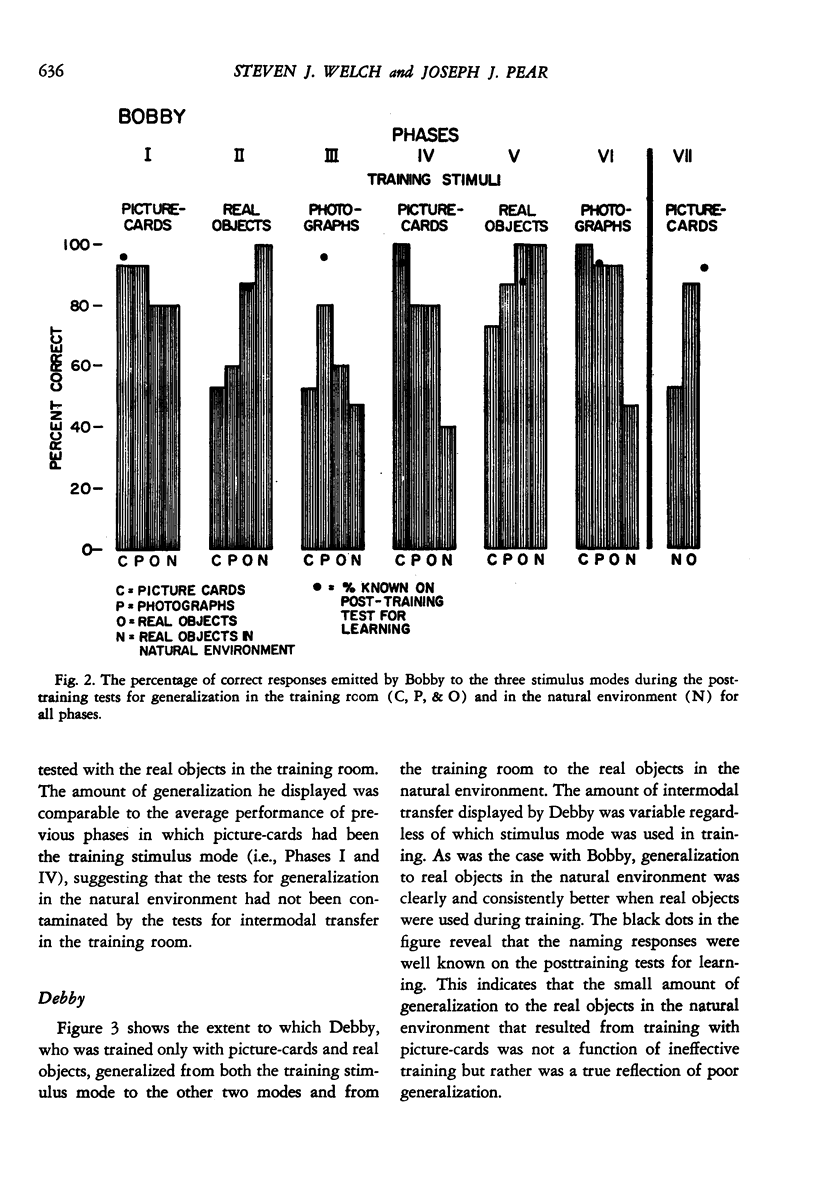
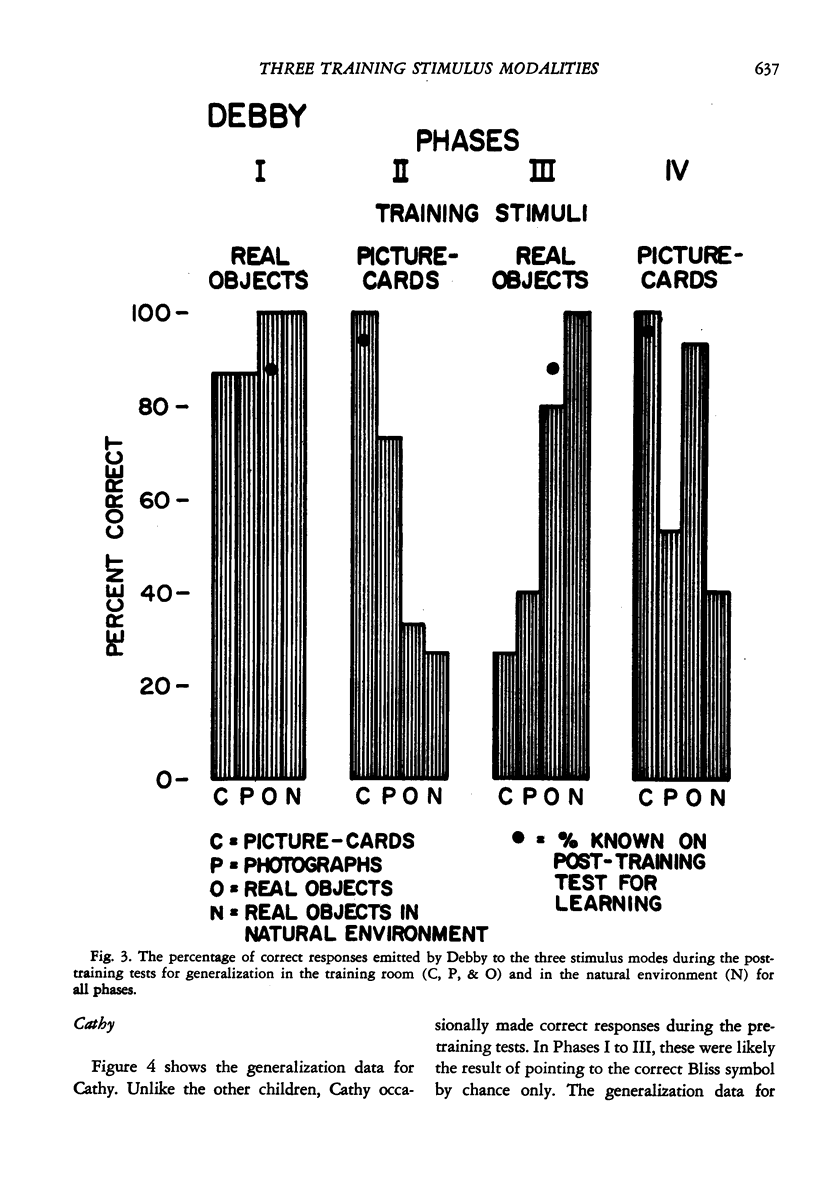
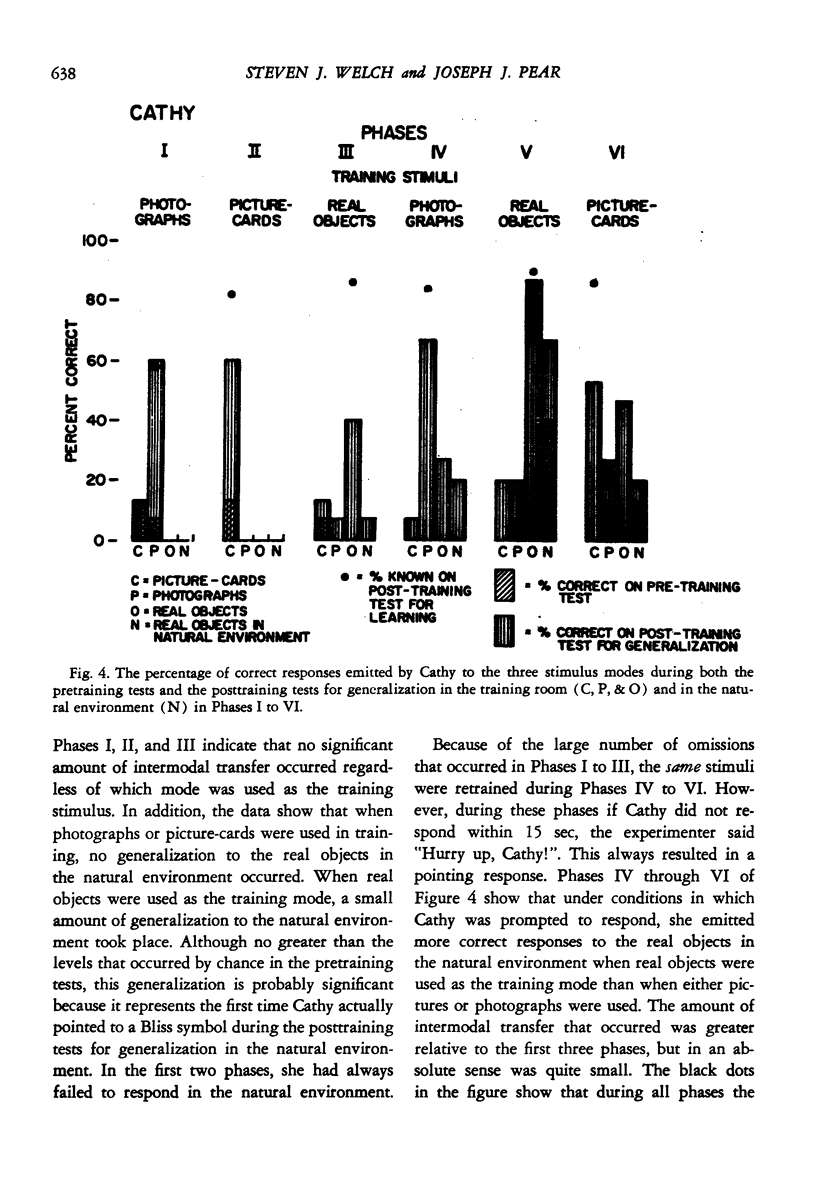
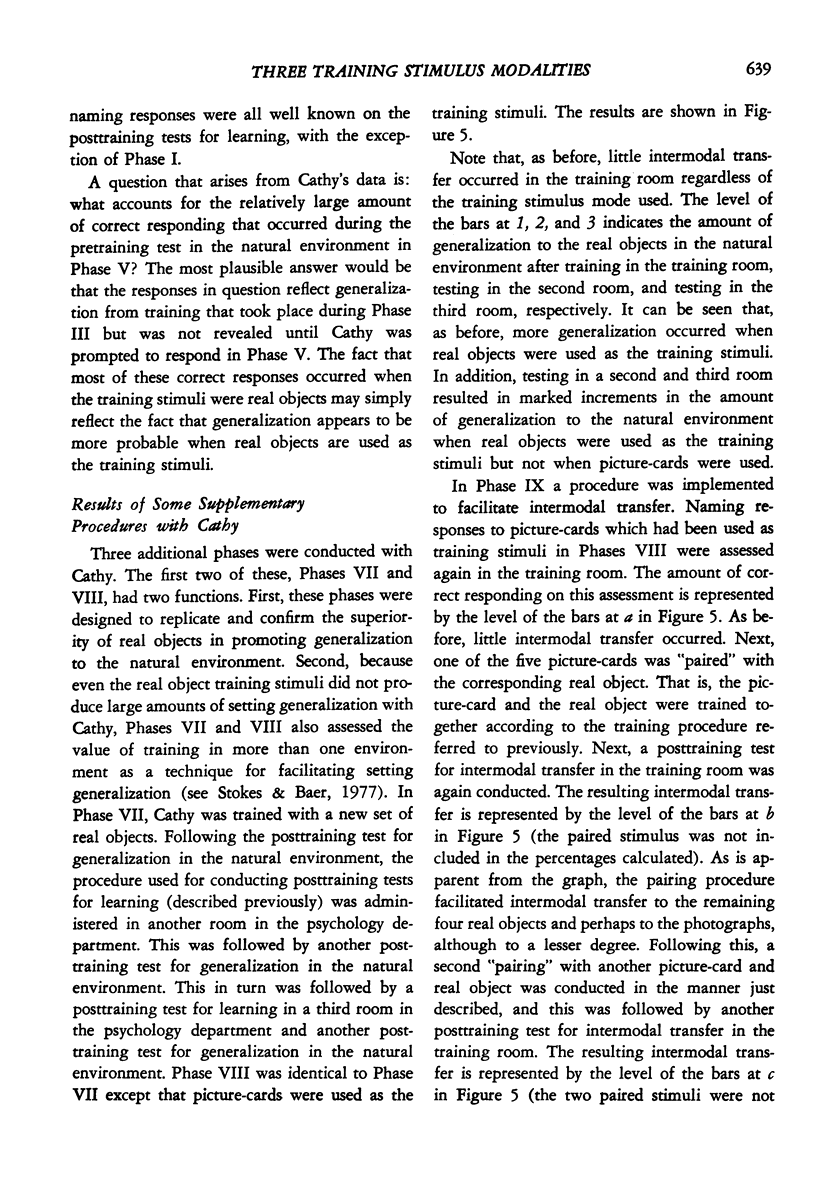
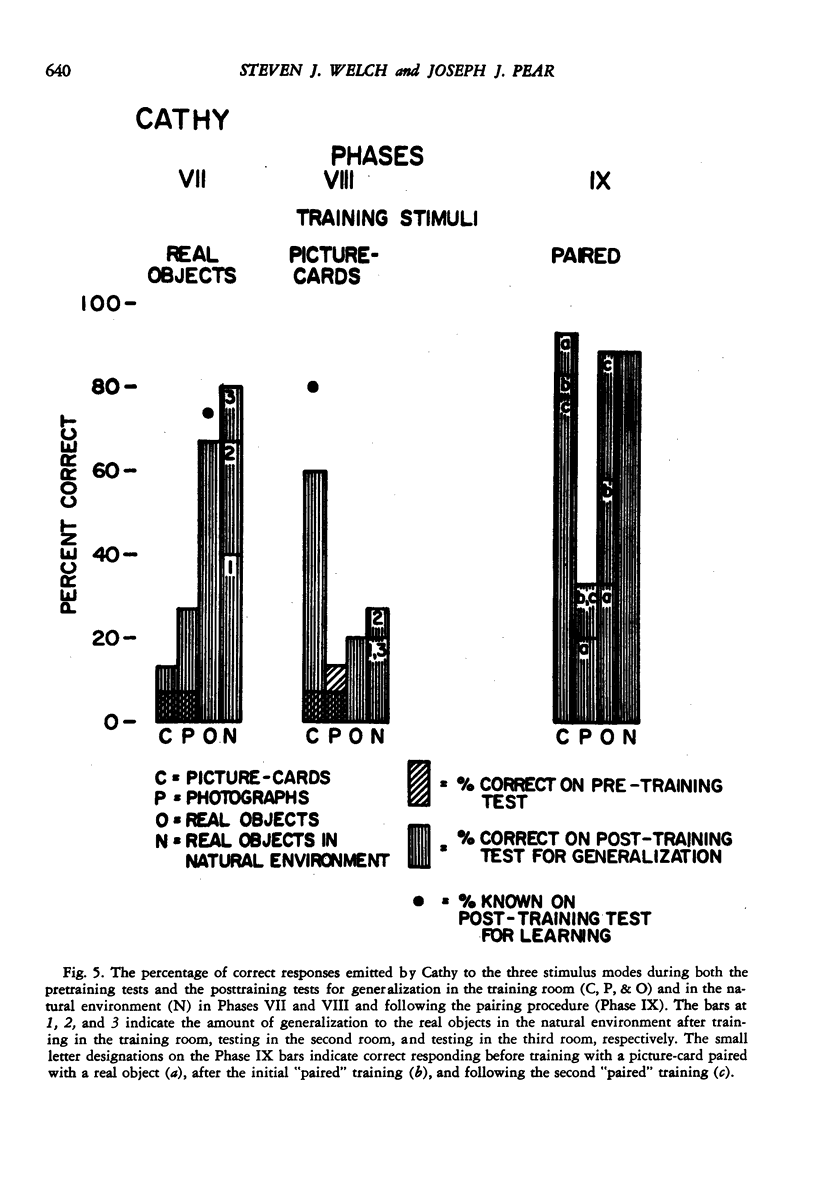
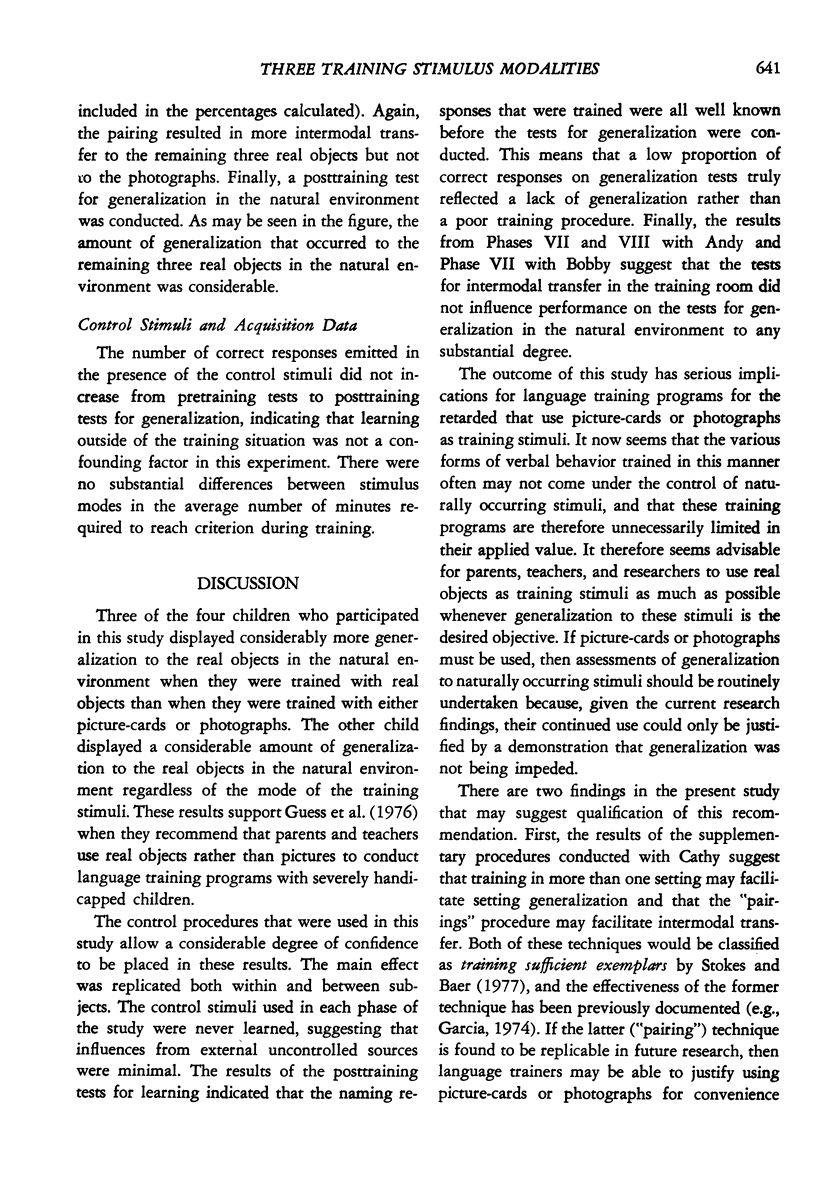

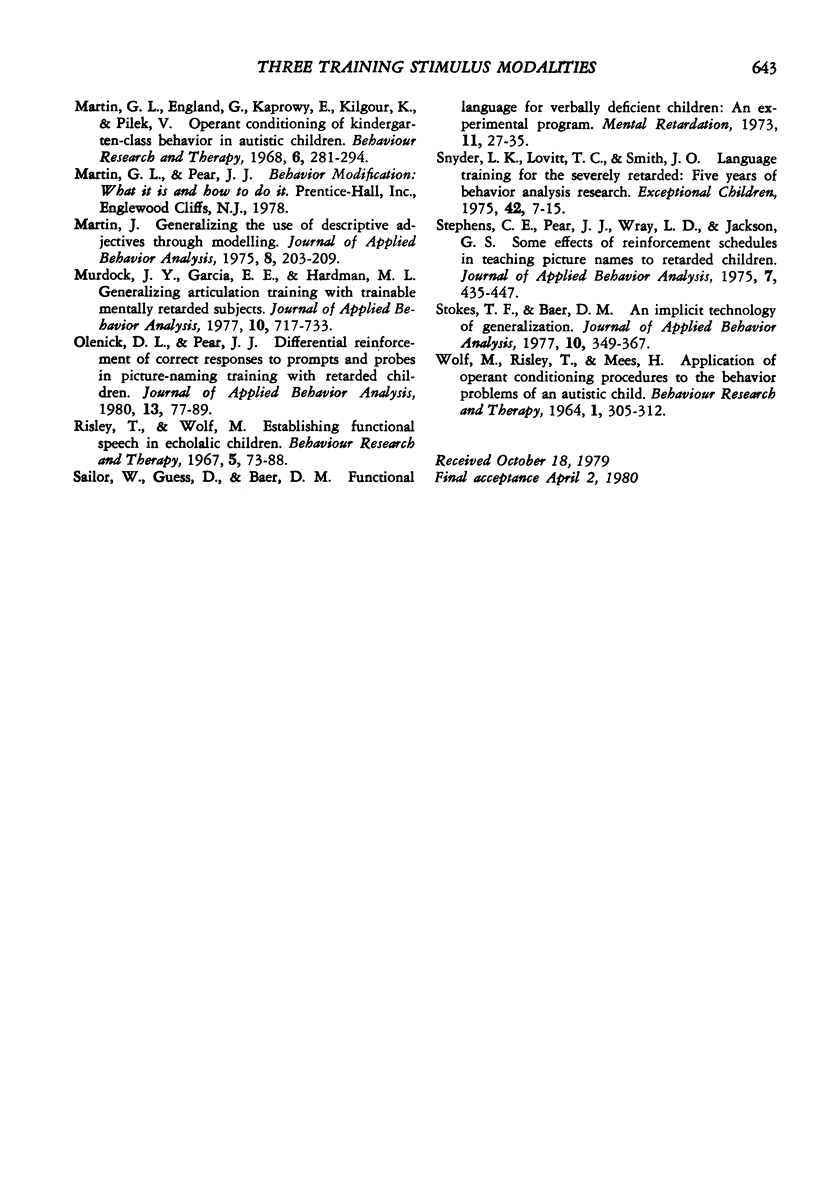
Selected References
These references are in PubMed. This may not be the complete list of references from this article.
- Archer L. A. Blissymbolics-a nonverbal communication system. J Speech Hear Disord. 1977 Nov;42(4):568–579. doi: 10.1044/jshd.4204.568. [DOI] [PubMed] [Google Scholar]
- Baer D. M., Guess D. Teaching productive noun suffixes to severely retarded children. Am J Ment Defic. 1973 Mar;77(5):498–505. [PubMed] [Google Scholar]
- Biberdorf J. R., Pear J. J. Two-to-one versus one-to-one student-teacher ratios in the operant verbal training of retarded children. J Appl Behav Anal. 1977 Fall;10(3):506–506. doi: 10.1901/jaba.1977.10-506. [DOI] [PMC free article] [PubMed] [Google Scholar]
- Eckerman D. A., Lanson R. N., Cumming W. W. Acquisition and maintenance of matching without a required observing response. J Exp Anal Behav. 1968 Jul;11(4):435–441. doi: 10.1901/jeab.1968.11-435. [DOI] [PMC free article] [PubMed] [Google Scholar]
- Garcia E. E., DeHaven E. D. Use of operant techniques in the establishment and generalization of language: a review and analysis. Am J Ment Defic. 1974 Sep;79(2):169–178. [PubMed] [Google Scholar]
- Garcia E. The training and generalization of a conversational speech form in nonverbal retardates. J Appl Behav Anal. 1974 Spring;7(1):137–149. doi: 10.1901/jaba.1974.7-137. [DOI] [PMC free article] [PubMed] [Google Scholar]
- Griffiths H., Craighead W. E. Generalization in operant speech therapy for misarticulation. J Speech Hear Disord. 1972 Nov;37(4):485–494. doi: 10.1044/jshd.3704.485. [DOI] [PubMed] [Google Scholar]
- Harris S. L. Teaching language to nonverbal children--with emphasis on problems of generalization. Psychol Bull. 1975 Jul;82(4):565–580. doi: 10.1037/h0076903. [DOI] [PubMed] [Google Scholar]
- Kircher A. S., Pear J. J., Martin G. L. Shock as punishment in a picture-naming task with retarded children. J Appl Behav Anal. 1971 Fall;4(3):227–233. doi: 10.1901/jaba.1971.4-227. [DOI] [PMC free article] [PubMed] [Google Scholar]
- Martin G. L., England G., Kaprowy E., Kilgour K., Pilek V. Operant conditioning of kindergarten-class behavior in autistic children. Behav Res Ther. 1968 Aug;6(3):281–294. doi: 10.1016/0005-7967(68)90062-4. [DOI] [PubMed] [Google Scholar]
- Martin J. A. Generalizing the use of descriptive adjectives through modelling. J Appl Behav Anal. 1975 Summer;8(2):203–209. doi: 10.1901/jaba.1975.8-203. [DOI] [PMC free article] [PubMed] [Google Scholar]
- Murdock J. Y., Garcia E. E., Hardman M. L. Generalizing articulation training with trainable mentally retarded subjects. J Appl Behav Anal. 1977 Winter;10(4):717–733. doi: 10.1901/jaba.1977.10-717. [DOI] [PMC free article] [PubMed] [Google Scholar]
- Olenick D. L., Pear J. J. Differential reinforcement of correct responses to probes and prompts in picture-name training with severely retarded children. J Appl Behav Anal. 1980 Spring;13(1):77–89. doi: 10.1901/jaba.1980.13-77. [DOI] [PMC free article] [PubMed] [Google Scholar]
- Risley T., Wolf M. Establishing functional speech in echolalic children. Behav Res Ther. 1967 May;5(2):73–88. doi: 10.1016/0005-7967(67)90001-0. [DOI] [PubMed] [Google Scholar]
- Sailor W., Guess D., Baer D. M. Functional language for verbally deficient children: an experimental program. Ment Retard. 1973 Jun;11(3):27–35. [PubMed] [Google Scholar]
- Snyder L. K., Lovitt T. C., Smith J. O. Language training for the severely retarded: five years of behavior analysis research. Except Child. 1975 Sep;42(1):7–15. doi: 10.1177/001440297504200102. [DOI] [PubMed] [Google Scholar]
- Stephens C. E., Pear J. J., Wray L. D., Jackson G. C. Some effects of reinforcement schedules in teaching picture names to retarded children. J Appl Behav Anal. 1975 Winter;8(4):435–447. doi: 10.1901/jaba.1975.8-435. [DOI] [PMC free article] [PubMed] [Google Scholar]
- Stokes T. F., Baer D. M. An implicit technology of generalization. J Appl Behav Anal. 1977 Summer;10(2):349–367. doi: 10.1901/jaba.1977.10-349. [DOI] [PMC free article] [PubMed] [Google Scholar]


